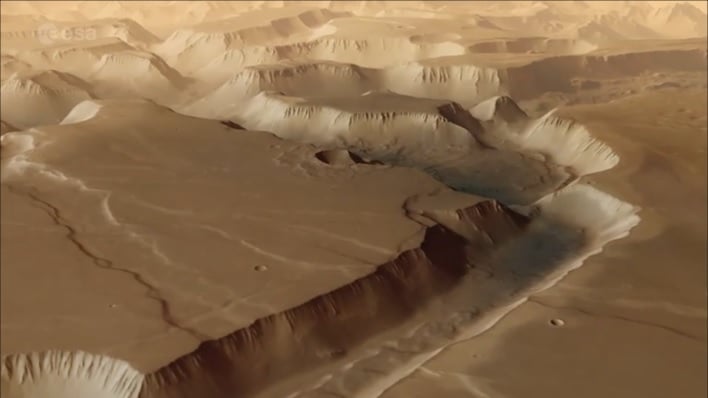Stunning Mars Flyover Tours The Red Planet's Incredible Labyrinth Of Night

ESA shared footage captured by the Mars Express spacecraft as it flew over the eastern part of Noctis Labyrinthus. It captured the incredible view with its High-Resolution Stereo Camera (HRSC), which presented a top-down perspective across the tangled landscape below. Volcanism in the nearby Tharsis region is believed to have caused the labyrinth's features, causing large areas of Martian crust to arch upwards and eventually become stretched and tectonically stressed.
The HRSC is capturing the Red Planet in full color, 3D, and with a resolution of about 10 meters. Other selected areas are imaged at two-meter resolution. ESA states that one of the camera's greatest strengths is the unprecedented pointing accuracy achieved by combining images at the two different resolutions.
"The strength of HRSC is to perform high-resolution digital terrain models of the Martian surface in order to provide topographic context for the geoscientific evaluation of surface processes in space and time," explained Raif Jaumann, previous HRSC Principal Investigator from the Institute of Planetary Research.
The video of Noctis Labyrinthus was created using an image mosaic built over eight orbits. It is combined with topographic information from a digital terrain model to generate a three-dimensional landscape, with every second of the video comprising 50 separate frames that are rendered according to a pre-defined camera path, according to ESA.

